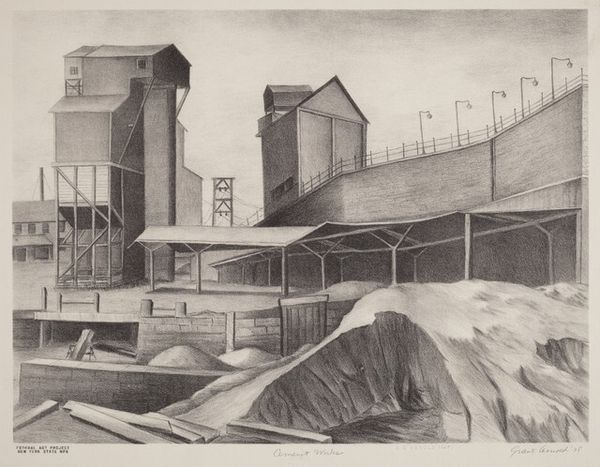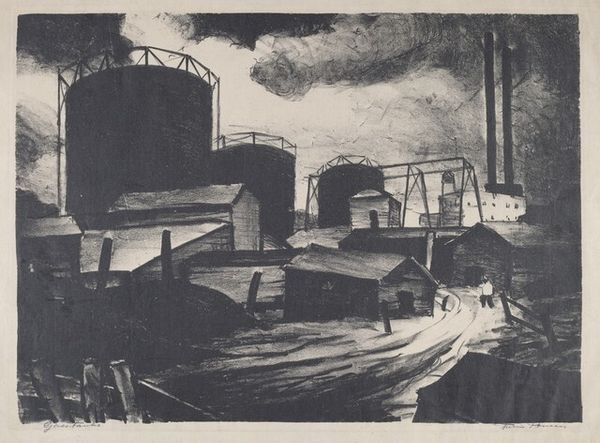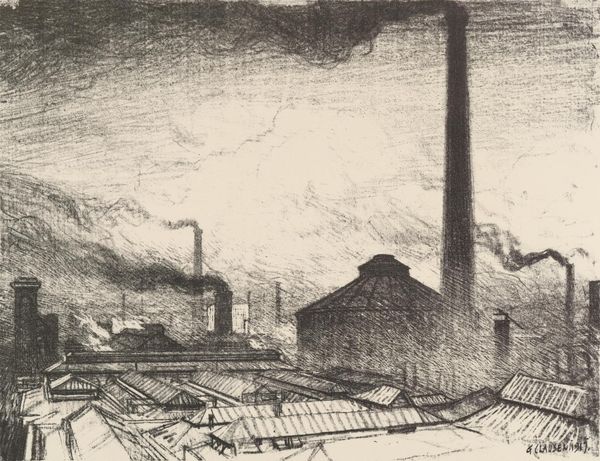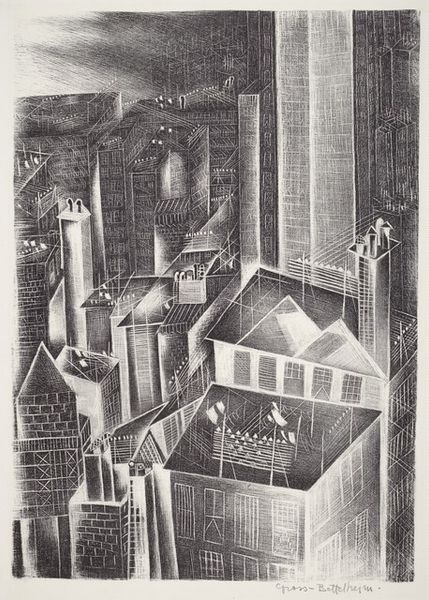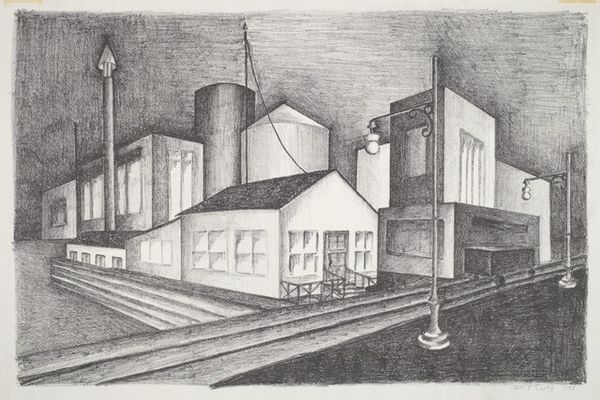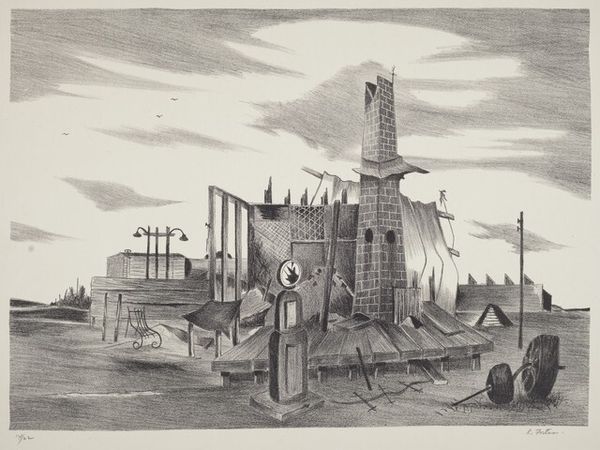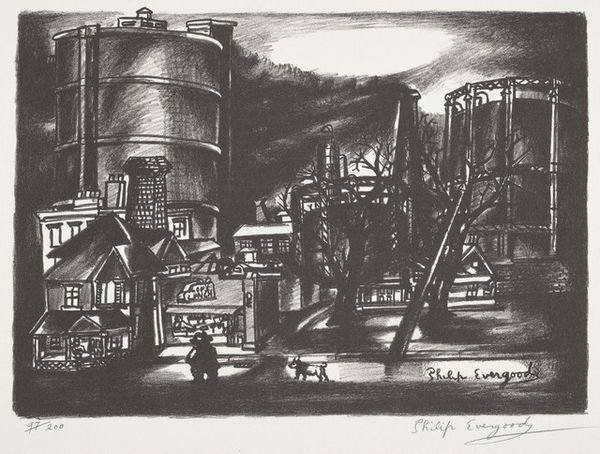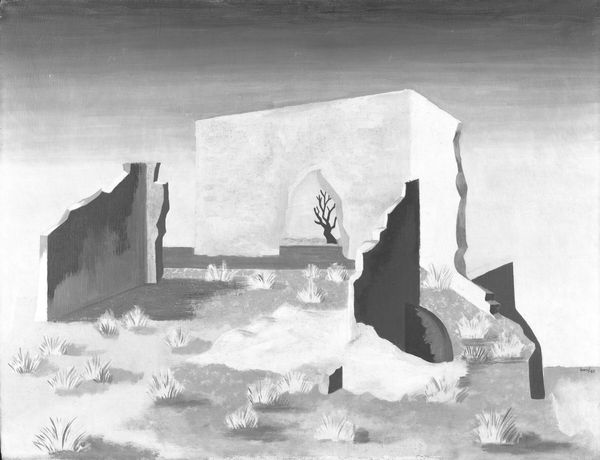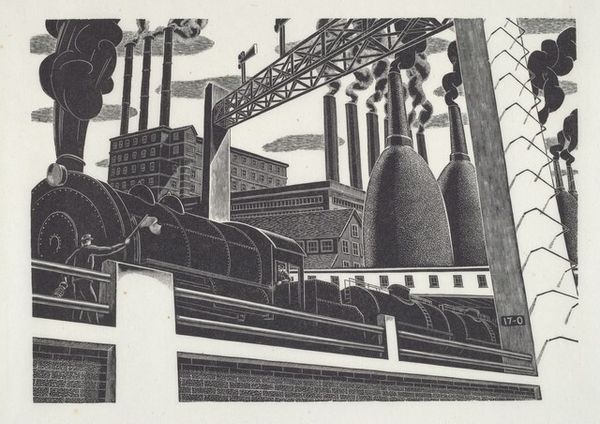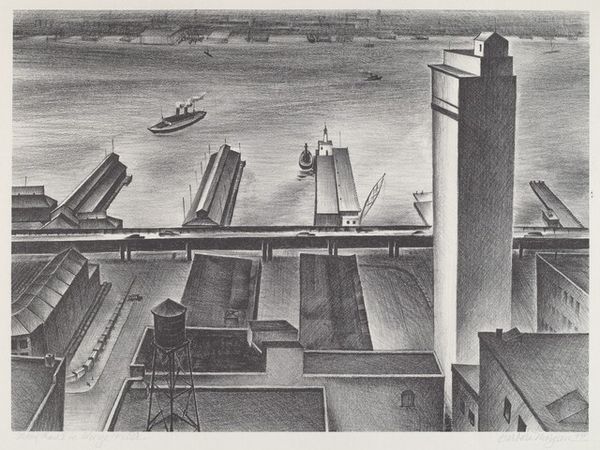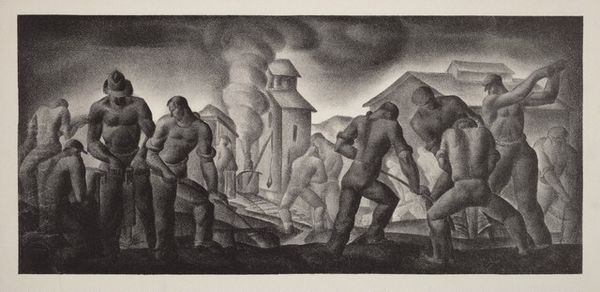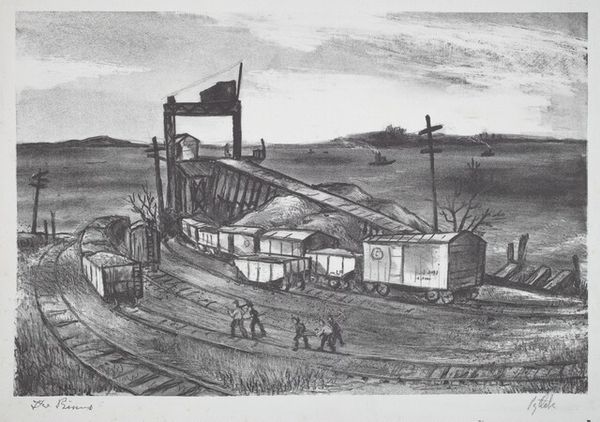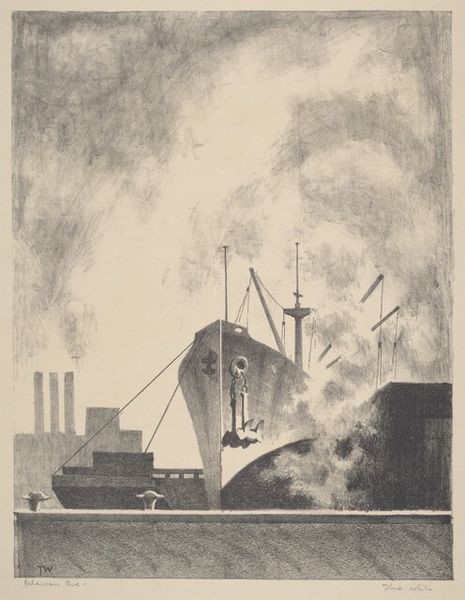
Dimensions: 15 1/8 × 21 in. (38.4 × 53.3 cm)
Copyright: Public Domain
Editor: So, this is Joseph Kaplan’s "Waterfront," painted in 1940. It seems to be acrylic paint on either canvas or a drawing. I'm immediately struck by the bleakness, yet the intense activity. There's so much industry depicted. How do you interpret this work? Curator: From a materialist perspective, this piece offers a window into the realities of labor and production during the Depression era. The subject is not some glorious landscape but a gritty, working waterfront. Look closely at the figures – they’re engaged in manual labor. Editor: Yes, they are clearly working! How does the choice of medium, perhaps acrylic paint contribute to this interpretation? Curator: The potential choice of acrylic—itself a relatively new material in 1940, hints at the modernization and industrialization depicted in the scene. Consider too, that paintings themselves are commodities. Kaplan's choice to represent laborers challenges conventional high art. Are those figures idealized heroes, or exploited workers, doing jobs of working class people of that time? Editor: I see your point. It definitely elevates the everyday worker. And using an emerging material to capture a modern industrial scene underscores that idea. So, the materials themselves and their context become central to understanding the painting’s message? Curator: Exactly. The painting asks us to consider who is represented in art and how, also pushing at the boundaries of what could be considered proper 'art' in that period. The social context, the depicted labor, and even the materiality challenge traditional aesthetics. Editor: I never really considered the materials themselves as carrying such significance before! Curator: That's materiality for you. Art as evidence and interrogation. Always questioning.
Comments
No comments
Be the first to comment and join the conversation on the ultimate creative platform.
